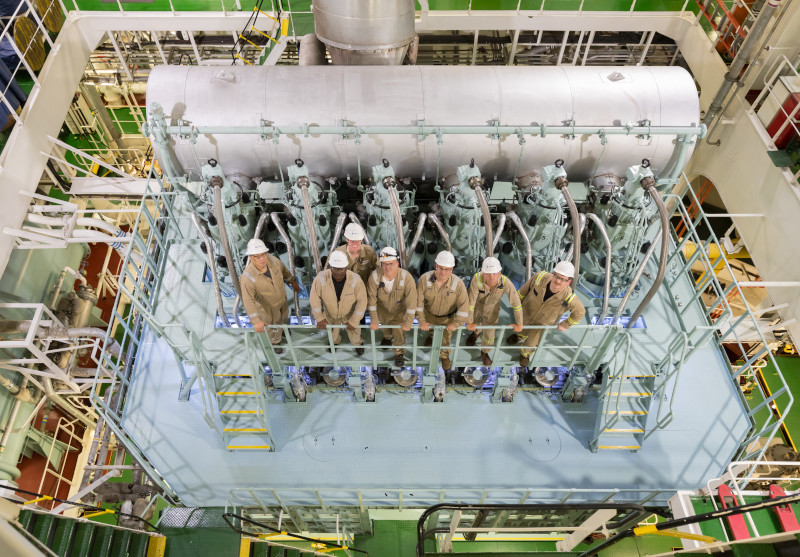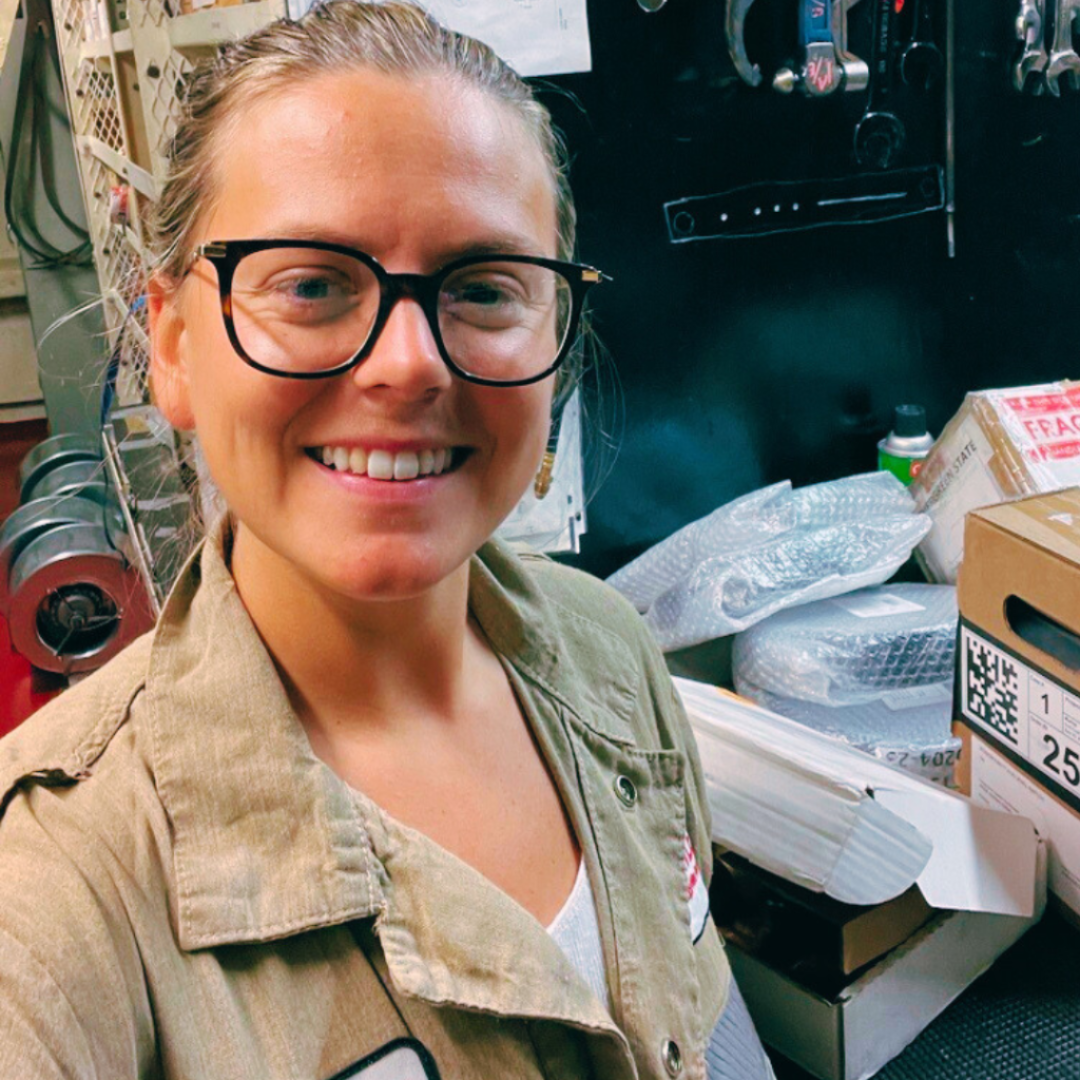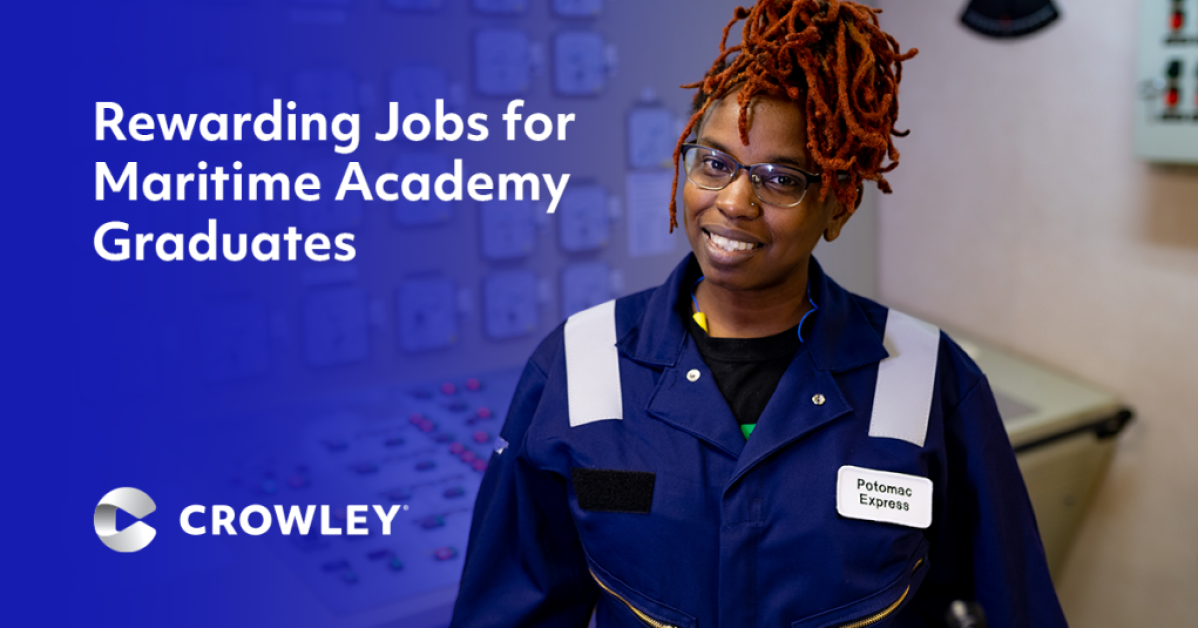
A Vital Role in Ship Operations
Engine room maritime jobs aboard ships are essential to running an efficient, safe operation at sea. The engineering crew on a vessel is responsible for the maintenance, operations, and repairs of the ship’s major mechanical systems. There are duties in the engine room, fireroom, machine shop, steering-engine room and more.
“Engineers keep things moving in the industry, in a very literal sense. Tankers aren’t like a car, it’s not just a push start and oil change every 5,000 miles,” said Leonidas Hawkins, third assistant engineer on the MV Oregon tanker. “Everything is a process.”
Experienced maritime professionals looking for these rewarding marine engineer careers will find many opportunities at Crowley. Available maritime careers focused on engineering include qualified members of the engineering department (QMED), an unlicensed position, and licensed roles like designated duty engineer (DDE), assistant engineer, or chief engineer.
When pursuing a career at sea in the engine room, it’s important to know what these positions do, how to gain experience and requirements for each, and how Crowley can help you grow your career.
Why Choose an Engine Room Career with Crowley
“As a seaman, I do whatever is needed on the boat,” said Hover. Working on a harbor ship assist and escort tugboat, his daily tasks include boat maintenance, handling the lines that connect the boat to a ship helping to dock, undock and guide these ships in or out to sea, and also engine room rounds, watch-standing in the wheelhouse and more.
“Crowley has one of the largest U.S. flagged fleets and is a large and steadfast company,” said Hawkins. “This means Crowley offers both job stability and speedy promotions.”
A career path with Crowley offers a safe and respectful workplace, excellent pay, competitive benefits, a flexible schedule and retirement options. A signing bonus is sometimes offered to marine engineers.
“A zero-tolerance policy for workplace discrimination is in the paperwork for many companies nowadays — only Crowley seems to be so bold with their culture of inclusivity,” said Hawkins. Crowley encourages its mariners and administrative employees to participate in business resource groups (BRGs), which include a Maritime Network BRG, focused on mariner career development and providing resources to foster inclusion and diversity across its full employee population.
Hawkins mentioned another attractive benefit of his engineering role: “Making six figures a year while only working half a year is unheard of by most outside this industry.”
The Important Roles of the Engineering Crew
There are many vessel positions and career paths for an engineer. A starting point is in the engine department as a wiper, doing basic cleaning and support functions as assigned. Wiper is the entry-level endorsement granted by the U.S. Coast Guard on all merchant mariner credentials, allowing an individual to sail in that role. From there, the next engineering qualification is a QMED.
The responsibilities of a QMED vary from one job to another based on the type of equipment and vessel needs. A QMED works under the direction of the chief engineer, making safety and inspection rounds and performing basic engine and machinery maintenance. A QMED may also be the sole engineer on some smaller towing vessels.
As marine engineers gain time and experience onboard, they can upgrade their ratings and credentials to move up the ranks. This traditional method of advancing is called hawse-piping and can allow someone to move from QMED up to a licensed engineer or all the way to chief engineer.
Another path to becoming a marine engineer is to attend a maritime academy. Graduates with bachelor’s degrees enter the field with a third assistant engineer (3AE) license. Upon graduation, they can immediately sail as a 3AE. Many alternative programs like the American Maritime Officers TECH Program allow a high school graduate to gain a third assistant engineer license, without a bachelor’s degree, on an expedited two-year timeframe. The program is ideal for military veterans as well.
Depending on the vessel’s mission and the equipment onboard, some other background experiences that can benefit engineers are electrical, refrigeration and computer skills. As with most jobs at sea, marine engineers should have a sense of adventure, prefer to work outside versus inside an office and like to work with their hands.

Responsibilities increase from DDE or third assistant engineer (3AE) up to second then first assistant and then ultimately to chief engineer aboard vessels. Aboard tugboats, there is sometimes only one engineer. Engineering officers on larger tugboats and ships are responsible for the safe operation of the vessel’s propulsion and auxiliary systems and must carry a license issued by the U.S. Coast Guard.
“The best part of being an engineer is that each day presents new challenges,” said Hawkins.
For a maritime worker looking for the next step or a new challenge, acquiring the skills and licensing to earn a spot in the engine room may be ideal. Military veterans or those with other maritime-related experience may look into training programs or entry-level engine room roles as a great opportunity to advance and grow with Crowley.
Crowley offers rewarding maritime careers for college graduates and others looking to join a company that prioritizes safety and innovation while providing competitive wages, opportunities to advance and the choice to join a hard-working team building a sustainable future. Learn more about maritime jobs, including becoming a port engineer.
OTHER STORIES THAT MAY INTEREST YOU:


